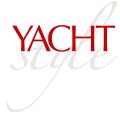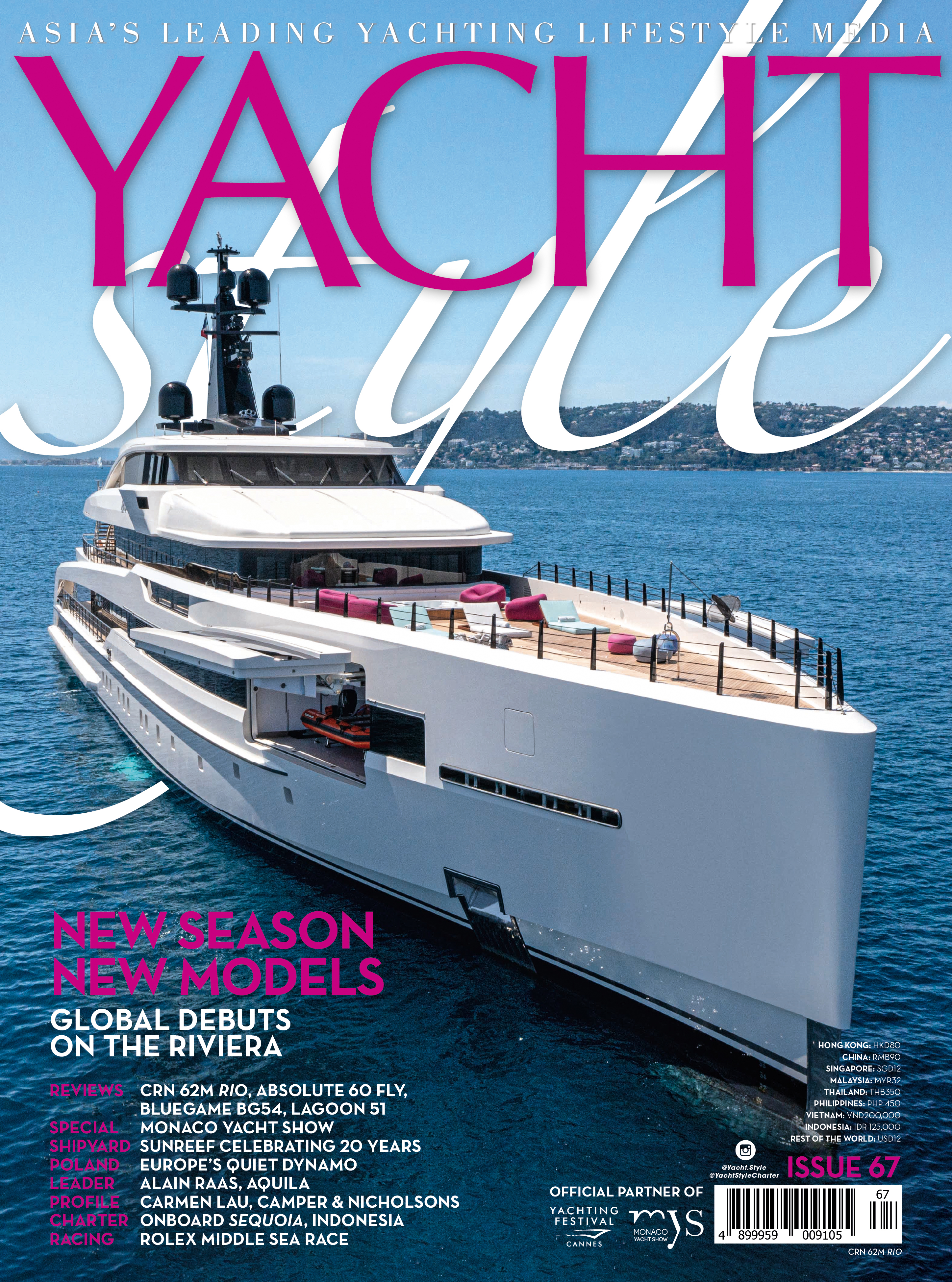SHARE
Shipyard: Out of Africa – Leopard Catamarans
SHARE
- May 23, 2024
- 4:05 pm
Built in South Africa by Robertson and Caine, Leopard’s power and sailing catamarans are as tough as the seas they cross, and available around the globe through the world’s biggest charter companies.
Words: John Higginson; photos: Leopard Catamarans/Nautique
Work in Progress at a Robertson and Caine Bolt Avenue facility
I don’t think I’ve ever seen so much dancing – or any dancing, in fact – during a shipyard visit. However, during our tour of Robertson and Caine’s half-a-dozen facilities around Cape Town, I frequently see factory workers grooving, singing and laughing, whether it’s while carrying a sanded piece of wood or having just downed tools for a well-earned tea break.
The vibe is contagious. It’s an ‘all hands on deck’ atmosphere and everyone seems happy and dedicated to producing Leopard catamarans for the rest of the world to enjoy.
Along with French brands Lagoon and Fountaine Pajot, Leopard is one of the ‘big three’ in the world of pleasure sailing and power catamarans. Employing 2,400 staff, Robertson and Caine builds exclusively for Leopard Catamarans and its sister charter companies Sunsail and The Moorings, with all three companies under Travelopia and all models known internally as ‘Leopards’. Following a strong rebound from a Covid era that halted the global travel industry in its tracks and left a couple of charter competitors in its wake, Leopard looks set to remain at the catamaran sector’s top table as continues to produce over 200 catamarans a year, shipped around the globe from South Florida to the south of France, Singapore to Sydney.
Yacht Style witnessed the production of all six Leopard models and their charter-specific versions during a head-spinning tour for some of the brand’s Asian dealers in Cape Town and other parts of the Western Cape province.
Robertson and Caine employs some 2,400 staff
There were visits to the Royal Cape Yacht Club and Cape Grace Marina, and cruises on Leopard powercats down the coast to Clifton, that offered views of the iconic Table Mountain rising above city.
An overnight safari at Inverdoorn Private Game Reserve saw lions, elephants, giraffes, zebras, cheetahs and, you guessed it, leopards. Not to mention a pleasant stop at the Ernie Els Wine Estate near Stellenbosch, among other local highlights.
The Leopard fleet against a Table Mountain vista
While the Western Cape offers an enjoyable lifestyle for some and is a tourist hot spot, unemployment is a huge issue, which is why labour-intensive industries like boatbuilding are much needed.
Robertson and Caine is among dozens of first-class boatbuilders of varying size across the country. However, it’s by far the country’s biggest and remains the southern hemisphere’s largest catamaran builder. In fact, it’s the global leader in inboard power catamarans, with a fleet focused on strong, powerful flybridge powercats.
Leopard is currently producing its fourth generation of powercats – the all-new 40 PC, 46 PC and 53 PC – alongside a trio of sailing catamarans, the 42, 45 and 50.
It all started when Lex Raas, a South African boatbuilder, followed eight years with Beneteau in France and the US by joining The Moorings in 1994, later becoming CEO and overseeing the merger with Sunsail.
Early on, Raas saw the potential of catamarans so asked John Robertson and the late Jerry Caine if they could build specifically-designed sailing cats for the Caribbean charter market.
John Robertson, co-founder of Robertson & Caine, with Franck Bauguil, head of Travelopia’s yachting business
Founded in the Cape Town suburb of Woodstock in 1991, Robertson and Caine produced 100 catamarans for The Moorings in just four years. Each made its way to its destination on its own hull, showing that these cats, initially tested and sea-trialled in the rough seas off Cape Town, were built to last and could handle ocean conditions.
The popularity of the models led to sailors wanting to buy their own and in 1997 the Leopard brand launched with its 45 model, producing 69 units. Custom layouts, optional gear and delivery locations were offered. The 38, 47 and 42 sailing cats followed, selling about 200 units between them, before Leopard entered the powercat market in 2002 with the 46 PC.
By this time, John Robertson had relocated to Florida, to be close to the brand’s core market and where today his son Michael works for the company.
Leopard’s 1,000th catamaran set sail by early 2012, firmly establishing the brand and Robertson and Caine’s position in the market. Just over a decade later, the 2,513th Leopard catamaran was launched on November 14, 2022. Why was this date significant? It was the 70th birthday of John Robertson, who retired from the business the following year after selling to Vox Ventures.
The Bolt Avenue site is dedicated to the Leopard 45
The growth has been steady but noticeable. Dieter Roux, the shipyard’s Service Manager, recalls annual production of about 80 units when he joined Robertson and Caine in 2007 and has seen that figure rise to about 215 catamarans a year now. To date, Robertson and Caine has produced over 2,800 ‘Leopard’ catamarans based on 26 models, with the first two-thirds or so cruising from Cape Town across seas and oceans to their delivery destinations, before shipping options proved feasible.
In terms of manpower and footprint, Robertson and Caine has a workforce and facilities size comparable to the likes of British builders Sunseeker and Princess in Poole and Plymouth respectively, both on England’s south coast.
It’s a business model that differs to many yacht builders in Italy, for example, which rely on sub-contractors, where the biggest companies like Azimut-Benetti, Ferretti Group and Sanlorenzo have operations across multiple cities.
Robertson and Caine’s seven sites are headed by the Woodstock facility on Railway Street, where it produces the 50 and 53 PC, the flagships of the sailing and powercat lines respectively. Woodstock is home to the in-house design team, as Leopard oversees all aspects of design, collaborating with Simonis Voogd Design on naval architecture.
Leopard produces about 25-30 units of the 53 Powercat yearly, which passed the 100-unit mark in April 2024, four years after the model debuted at the Miami International Boat Show in 2020. It’s an impressive demand for a model whose predecessor, the 51 PC, sold a stunning 137 units.
The 53 PC is on a cycle of about 11 working days, while the 50 sail cat is on a six-day cycle. To the northeast, the Neptune Street facility in Paarden Eiland includes the Leopard 40 PC assembly line, moulding shop and engineering department. Further northeast is Bolt Avenue, the only site with a testing pool and dedicated to the Leopard 45, the company’s best-selling model to date, with over 360 units produced. Nearby are neighbouring Graph Avenue and Hoist Avenue facilities, home to the Leopard 42 and 46 model assembly lines plus the large joinery workshop and CNC machines.
The company makes its own exterior and interior cushions at a new site. When complete, catamaran are trucked to the waterfront for commissioning before awaiting shipping to destinations in six continents. The US is the foremost market; Asia typically receives about 8-10 units a year.
Singapore’s Leopard dealership showed the 42, 50, 40 PC, 46 PC and 53 PC models at Singapore Yachting Festival 2024
Roughly half of Robertson and Caine’s output are private Leopard catamarans, with the other half split between Sunsail and The Moorings, where they’re available as part of enticing ownership programmes. Within Sunsail and The Moorings fleets, ownership plans include a charter programme of five to six years during which the yacht is managed and maintained at zero cost to the owner, who can use the yacht or others for up to 12 weeks of cruising – based on a points system – at any of the charter companies’ global destinations.
The Guaranteed Income package provides owners with a fixed monthly income – not dependent on charter activity – before the owner takes full ownership at completion of the programme. Alternatively, Thailand is among selected markets offering Option to Purchase, where owners initially pay 45 per cent and once the programme is completed, can choose whether to pay another 20 per cent to own the yacht outright or take a guaranteed cash buyback of 20 per cent.
Both programmes offer stress-free ownership as well as financial benefits and savings, offering an enticing way to dip your paw into the alluring world of Leopard cats.





























